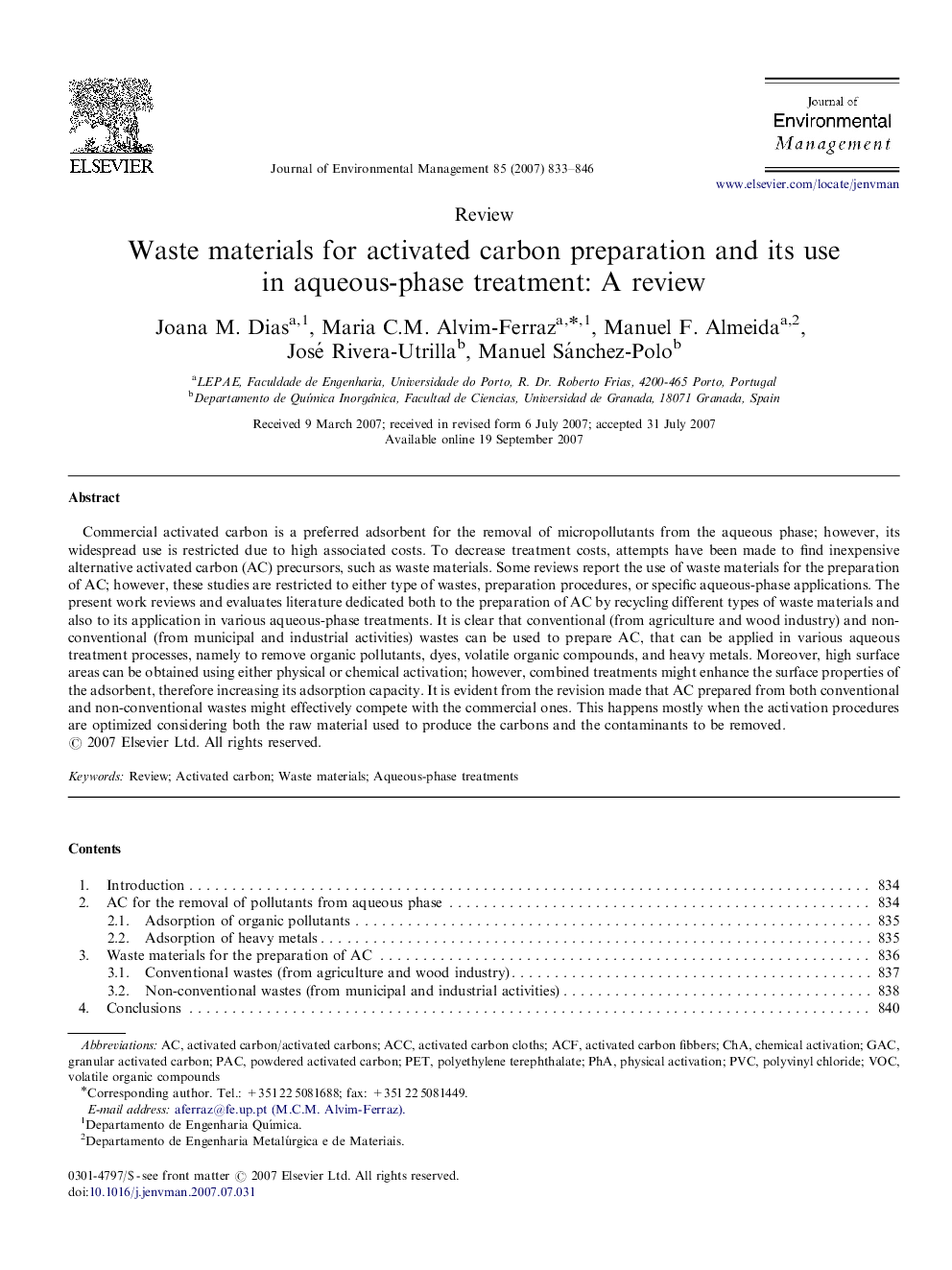| Article ID | Journal | Published Year | Pages | File Type |
|---|---|---|---|---|
| 1058486 | Journal of Environmental Management | 2007 | 14 Pages |
Commercial activated carbon is a preferred adsorbent for the removal of micropollutants from the aqueous phase; however, its widespread use is restricted due to high associated costs. To decrease treatment costs, attempts have been made to find inexpensive alternative activated carbon (AC) precursors, such as waste materials. Some reviews report the use of waste materials for the preparation of AC; however, these studies are restricted to either type of wastes, preparation procedures, or specific aqueous-phase applications. The present work reviews and evaluates literature dedicated both to the preparation of AC by recycling different types of waste materials and also to its application in various aqueous-phase treatments. It is clear that conventional (from agriculture and wood industry) and non-conventional (from municipal and industrial activities) wastes can be used to prepare AC, that can be applied in various aqueous treatment processes, namely to remove organic pollutants, dyes, volatile organic compounds, and heavy metals. Moreover, high surface areas can be obtained using either physical or chemical activation; however, combined treatments might enhance the surface properties of the adsorbent, therefore increasing its adsorption capacity. It is evident from the revision made that AC prepared from both conventional and non-conventional wastes might effectively compete with the commercial ones. This happens mostly when the activation procedures are optimized considering both the raw material used to produce the carbons and the contaminants to be removed.
